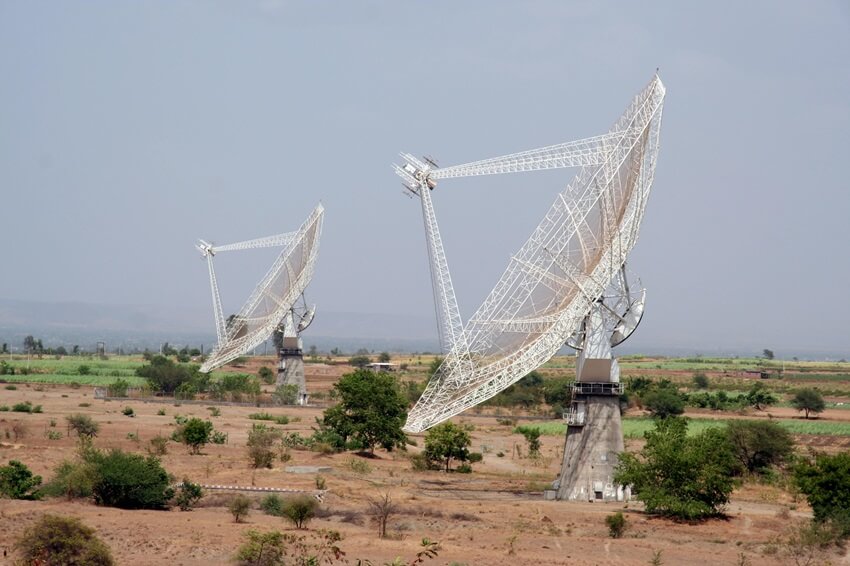Key Advancements in Radio Antenna Technology
Recent advancements in radio antennas technology have revolutionized the way we communicate and access information. One key advancement lies in the development of phased array antennas, which allow for electronic beam steering without moving parts. This technology enables faster and more precise communication, making it ideal for applications such as 5G networks, radar systems, and satellite communication.

Another significant advancement is the integration of metamaterials in antenna design. Metamaterials possess unique properties not found in nature, such as negative refractive index, enabling antennas to be more compact and efficient. By leveraging metamaterials, antennas can operate across multiple frequencies with improved bandwidth and signal quality. As a result, these antennas are being increasingly adopted in wireless communication systems and IoT devices, paving the way for more connected and efficient networks.
The Impact of Next-Gen Antennas on Communication
Next-generation antennas have revolutionized communication systems by enhancing signal quality, increasing data transfer speeds, and extending coverage range. These advanced antennas play a vital role in enabling seamless connectivity in various wireless technologies such as 5G networks, Internet of Things (IoT) devices, and satellite communications. With improved efficiency and performance, next-gen antennas enable more reliable and stable communication infrastructure across different industries and applications.

The impact of next-gen antennas on communication is profound, as they pave the way for faster data transmission, reduced latency, and enhanced network capacity. By leveraging innovative antenna technologies, communication networks can overcome previous limitations and deliver optimal performance in demanding environments. The evolution of antennas plays a crucial role in shaping the future of telecommunications, enabling new possibilities for connectivity and enabling the realization of diverse applications that rely on robust and efficient communication networks.
Challenges in Implementing Next-Gen Radio Antennas
The integration of next-generation radio antennas poses several hurdles for engineers and designers. The complexity of these advanced antennas requires specialized knowledge and expertise to ensure proper implementation. Ensuring seamless compatibility with existing communication systems and devices is a critical challenge faced when incorporating these new antennas into various networks and applications.
Moreover, the cost associated with developing and deploying next-gen radio antennas can be substantial. The need for advanced materials and technologies, as well as the investment in research and development, can significantly impact the overall expenses involved in implementing these antennas. This financial aspect adds another layer of difficulty for organizations looking to adopt the latest antenna technologies in their operations.
Potential Applications of Advanced Radio Antennas
Radio antennas have a wide range of potential applications across various industries due to their ability to enhance communication networks. In the telecommunications sector, advanced radio antennas can improve signal strength and coverage, allowing for better connectivity and faster data transmission. This is particularly beneficial in urban areas where network congestion is common, ensuring a more reliable and efficient communication infrastructure.
Furthermore, the automotive industry can also benefit from advanced radio antennas by integrating them into smart vehicles to enable seamless communication with other vehicles and infrastructure. This technology can enhance road safety through real-time data exchange, such as collision avoidance systems and traffic management. Additionally, advanced radio antennas can play a crucial role in the development of smart cities by supporting interconnected devices and systems for enhanced urban planning and management.
How Next-Gen Antennas Improve Signal Quality
Next-generation antennas have revolutionized the way signal quality is improved in communication systems. These antennas are equipped with advanced beamforming technology, which allows them to focus the signal in a specific direction, reducing interference and increasing the overall signal strength. Additionally, next-gen antennas use multiple-input-multiple-output (MIMO) technology to transmit and receive multiple signals simultaneously, further enhancing signal quality by mitigating multipath interference and boosting data rates.
Furthermore, the incorporation of smart algorithms in next-gen antennas enables them to adapt to changing environmental conditions in real-time. By dynamically adjusting parameters such as beam direction, polarization, and transmit power, these antennas can optimize signal reception and transmission, ensuring consistent and reliable communication even in challenging environments. The ability of next-gen antennas to continuously monitor and optimize signal quality makes them invaluable in applications where a stable and high-quality connection is essential.
The Role of Machine Learning in Enhancing Antenna Performance
Machine learning plays a crucial role in enhancing antenna performance by optimizing antenna design and configuration. By leveraging large datasets and sophisticated algorithms, machine learning can analyze complex patterns to fine-tune antenna parameters for improved signal reception and transmission. This advanced technology allows antennas to adapt to changing environmental conditions and mitigate interference, resulting in more reliable and efficient communication systems. Moreover, machine learning algorithms can autonomously adjust antenna settings in real-time, ensuring optimal performance without human intervention.
Furthermore, machine learning enables antenna arrays to dynamically adjust beamforming and beam steering to maximize signal coverage and quality. By continuously learning from data inputs, machine learning algorithms can predict and preempt signal disruptions, leading to enhanced overall system performance. With the ability to adapt and optimize antenna operations on the fly, machine learning empowers next-gen antennas to deliver superior connectivity and reliability in diverse communication scenarios.
Future Trends in Radio Antenna Design
As technology continues to advance, the future of radio antenna design holds promising developments. Researchers are exploring innovative materials like metamaterials and graphene to enhance antenna performance. These materials offer unique properties that can potentially revolutionize how antennas are designed and implemented in various industries.
Additionally, engineers are focusing on creating smaller, more efficient antennas to meet the demands of modern devices like IoT sensors and wearables. By leveraging novel design techniques such as fractal antennas and reconfigurable antennas, they aim to maximize antenna performance while minimizing size and power consumption. These advancements in antenna design are poised to shape the future of wireless communication systems and drive the evolution of connected devices.
Benefits of Using Next-Gen Antennas in Various Industries
Next-generation antennas offer a myriad of benefits across various industries. One of the key advantages is improved signal range, which enables better communication capabilities in sectors such as telecommunications and broadcasting. By utilizing advanced antenna technology, companies can ensure more reliable and stable connections, leading to enhanced productivity and customer satisfaction. Additionally, the increased bandwidth provided by next-gen antennas allows for faster data transmission, facilitating seamless operations in sectors like transportation and logistics.
Moreover, the enhanced efficiency of next-generation antennas contributes to cost savings for industries reliant on wireless communication systems. The ability to transmit data more effectively reduces the need for multiple antennas or complex set-ups, streamlining processes and optimizing resources. This cost-effectiveness is particularly valuable in sectors like healthcare and agriculture, where reliable data transmission is crucial for operations but budget constraints can be significant. Overall, the adoption of next-gen antennas presents a compelling proposition for industries seeking to improve their communication infrastructure and drive performance advancements.
| Read More Topics |
| Frequency re-use by dual polarization |
| Performance parameters of radio receiver |
| Radiographic inspection advantages and limitation |





